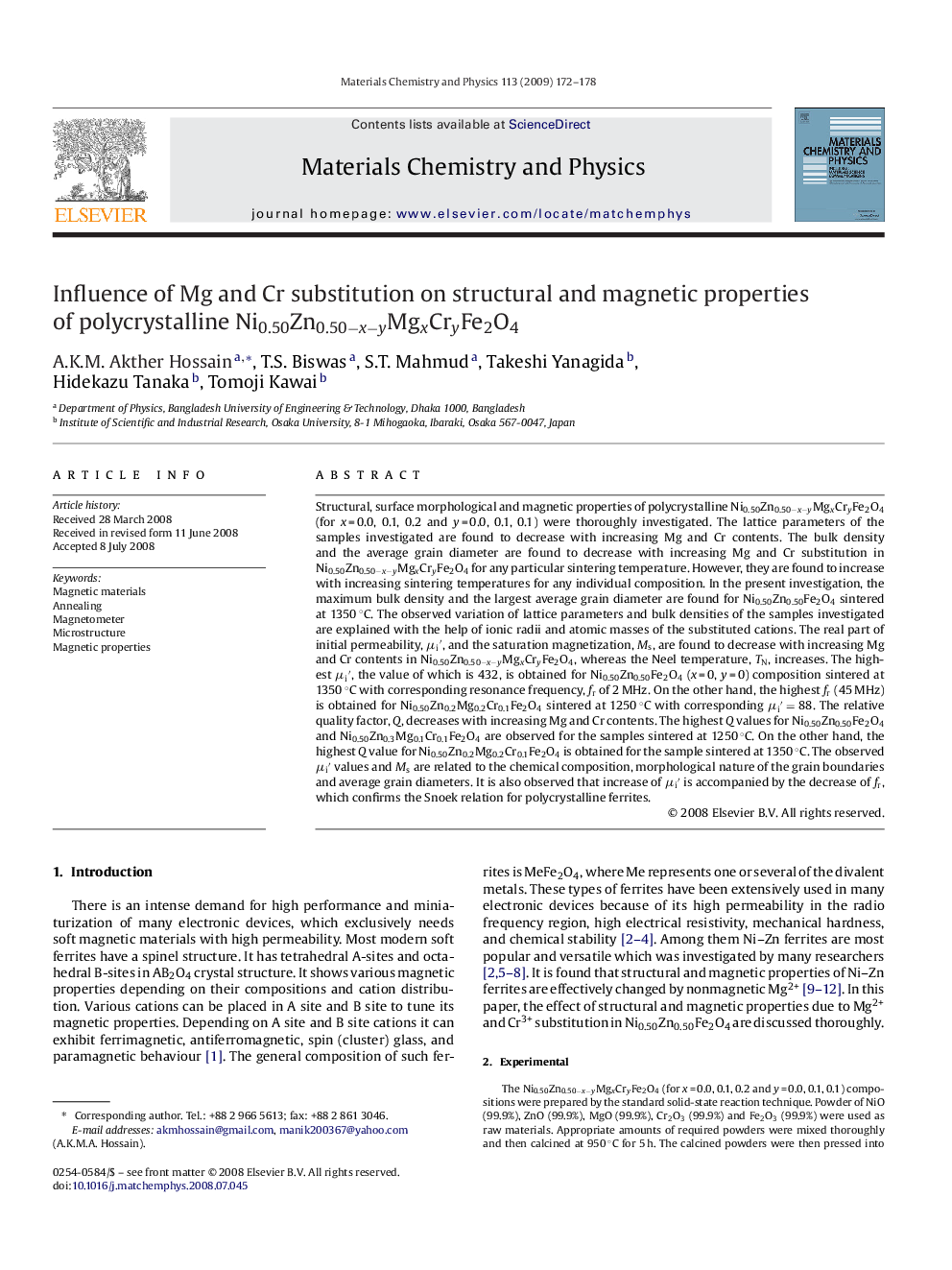| Article ID | Journal | Published Year | Pages | File Type |
|---|---|---|---|---|
| 1526482 | Materials Chemistry and Physics | 2009 | 7 Pages |
Abstract
Structural, surface morphological and magnetic properties of polycrystalline Ni0.50Zn0.50âxâyMgxCryFe2O4 (for x = 0.0, 0.1, 0.2 and y = 0.0, 0.1, 0.1) were thoroughly investigated. The lattice parameters of the samples investigated are found to decrease with increasing Mg and Cr contents. The bulk density and the average grain diameter are found to decrease with increasing Mg and Cr substitution in Ni0.50Zn0.50âxâyMgxCryFe2O4 for any particular sintering temperature. However, they are found to increase with increasing sintering temperatures for any individual composition. In the present investigation, the maximum bulk density and the largest average grain diameter are found for Ni0.50Zn0.50Fe2O4 sintered at 1350 °C. The observed variation of lattice parameters and bulk densities of the samples investigated are explained with the help of ionic radii and atomic masses of the substituted cations. The real part of initial permeability, μiâ², and the saturation magnetization, Ms, are found to decrease with increasing Mg and Cr contents in Ni0.50Zn0.50âxâyMgxCryFe2O4, whereas the Neel temperature, TN, increases. The highest μiâ², the value of which is 432, is obtained for Ni0.50Zn0.50Fe2O4 (x = 0, y = 0) composition sintered at 1350 °C with corresponding resonance frequency, fr of 2 MHz. On the other hand, the highest fr (45 MHz) is obtained for Ni0.50Zn0.2Mg0.2Cr0.1Fe2O4 sintered at 1250 °C with corresponding μiâ²=88. The relative quality factor, Q, decreases with increasing Mg and Cr contents. The highest Q values for Ni0.50Zn0.50Fe2O4 and Ni0.50Zn0.3Mg0.1Cr0.1Fe2O4 are observed for the samples sintered at 1250 °C. On the other hand, the highest Q value for Ni0.50Zn0.2Mg0.2Cr0.1Fe2O4 is obtained for the sample sintered at 1350 °C. The observed μiâ² values and Ms are related to the chemical composition, morphological nature of the grain boundaries and average grain diameters. It is also observed that increase of μiâ² is accompanied by the decrease of fr, which confirms the Snoek relation for polycrystalline ferrites.
Related Topics
Physical Sciences and Engineering
Materials Science
Electronic, Optical and Magnetic Materials
Authors
A.K.M. Akther Hossain, T.S. Biswas, S.T. Mahmud, Takeshi Yanagida, Hidekazu Tanaka, Tomoji Kawai,
